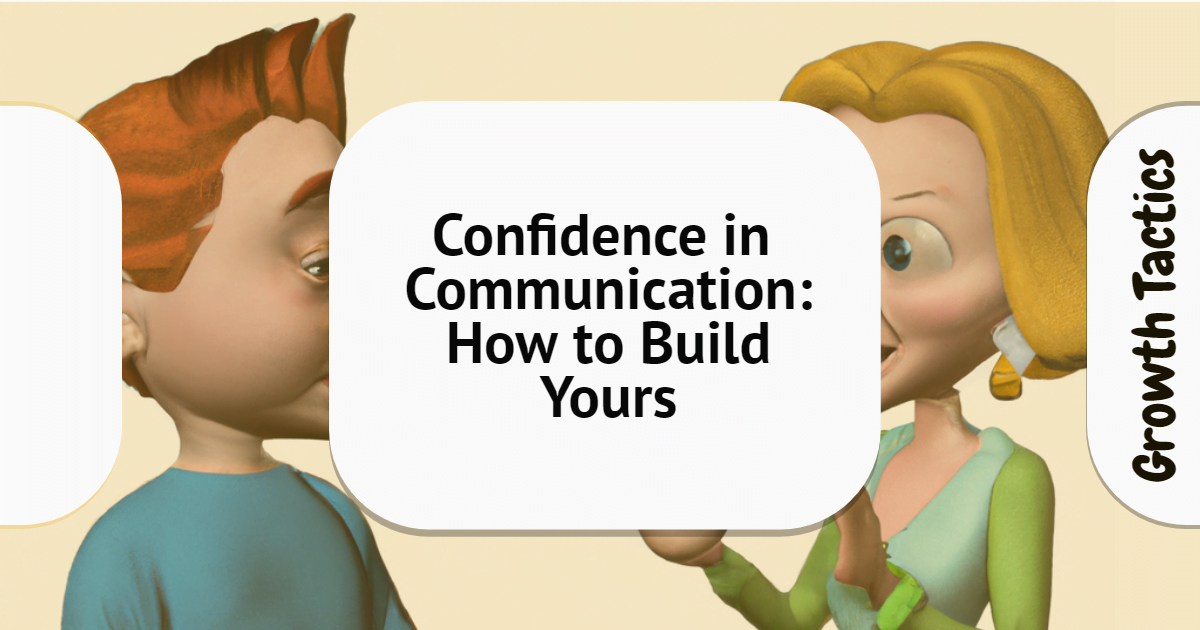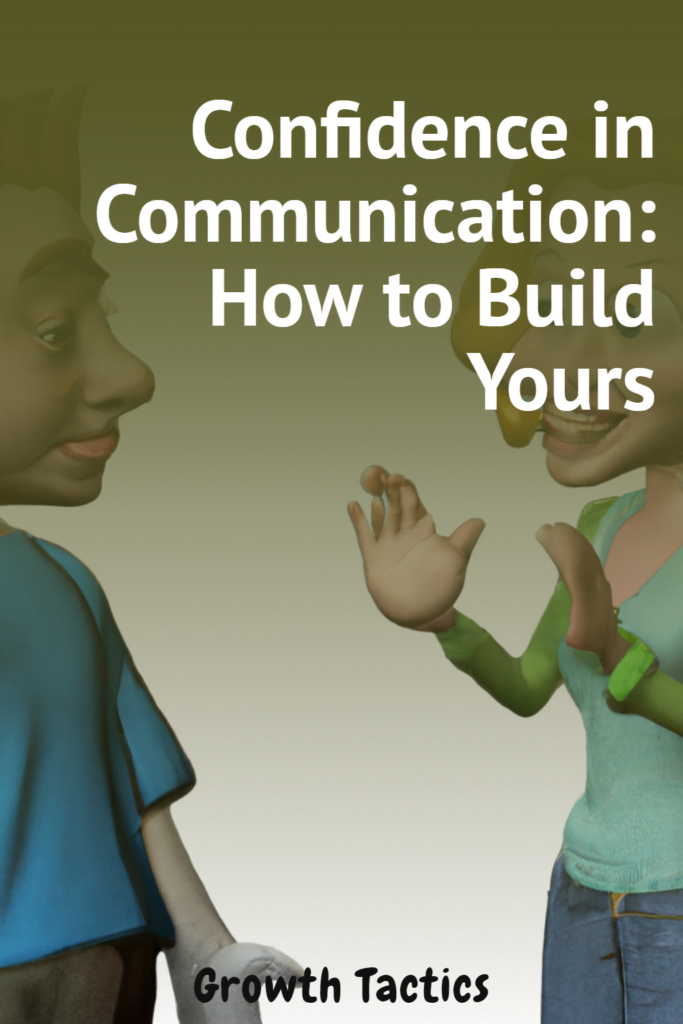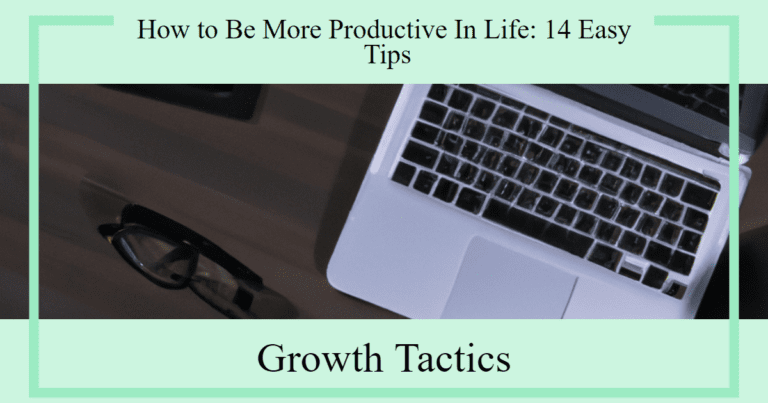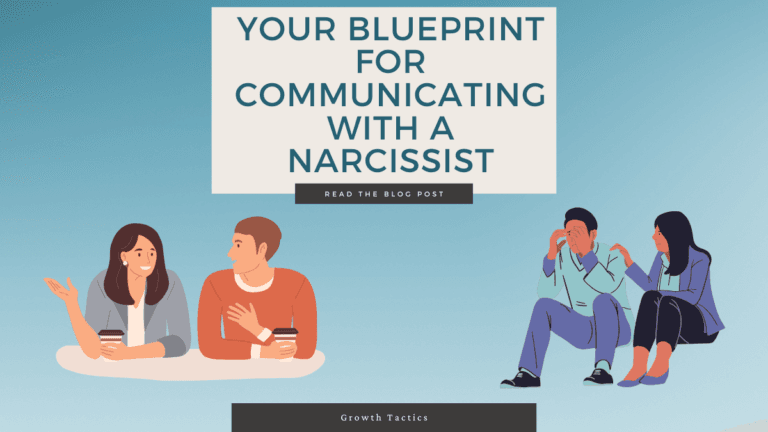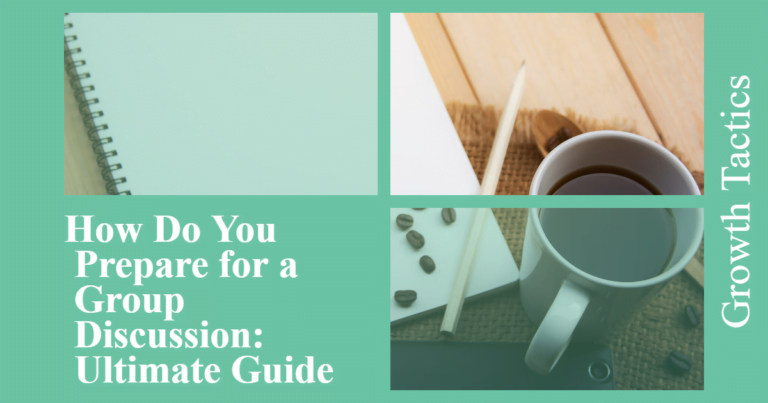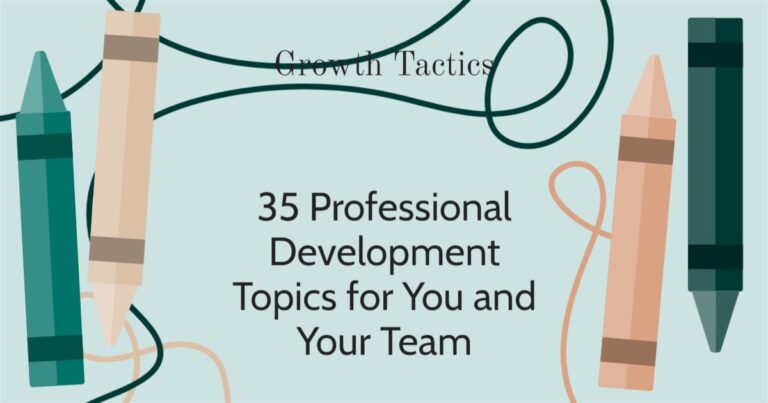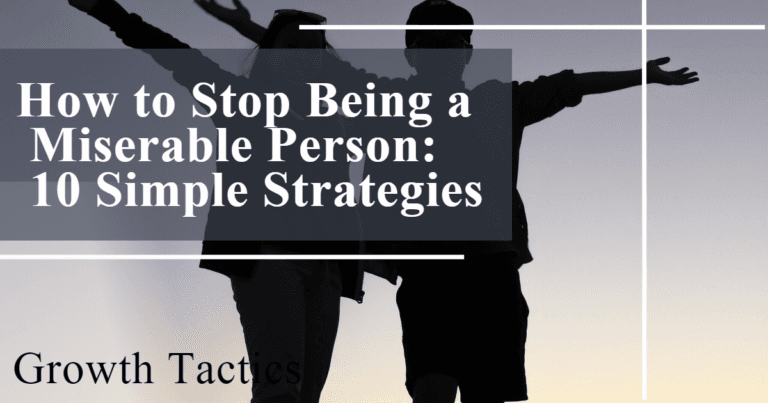Imagine walking into a room and holding everyone’s attention with just your presence. Your words flow, your ideas resonate, and your confidence is unshakable. This is not just a dream. Confidence in communication is a skill you can master.
Communication is the key to success, whether in the workplace or in personal pursuits. In this article, we’ll unlock the secrets to boosting your confidence and honing your communication skills to command respect and convey your thoughts effectively.
Get ready to transform the way you connect with the world around you. Have the courage to express yourself and let your self-esteem take center stage. It’s time to start your journey to become a compelling communicator.

Jump To Section
Understanding the Basics of Communication
Good communication is the bridge between confusion and clarity. But what makes communication effective? It’s not just about talking; it’s about how you convey your message.
Speak Clearly: Use simple words. Make sure people understand you. Don’t mumble. If your words are clear, your message is clear.
Listen Actively: Communication is a two-way street. Listen more than you talk. Understand others’ perspectives. This shows respect and encourages open sharing.
Non-Verbal Cues Matter: Your body says a lot. Maintain eye contact to show interest. Your posture can show confidence. Small nods encourage the speaker. These signals complement your words.
Tailor Your Message: Know your audience. Adjust your tone and language to suit them. A presentation for work differs from a chat with friends. Suiting your message to your audience makes it land better.
Feedback is Key: After communicating, ask for feedback. This shows you value others’ input. It helps you learn and grow.
In essence, effective communication is simple but powerful. It ensures you’re heard and understood. It’s about expressing yourself and connecting with others. Practice these basics and watch your communication skills soar.
The Connection Between Self-Confidence and Communication
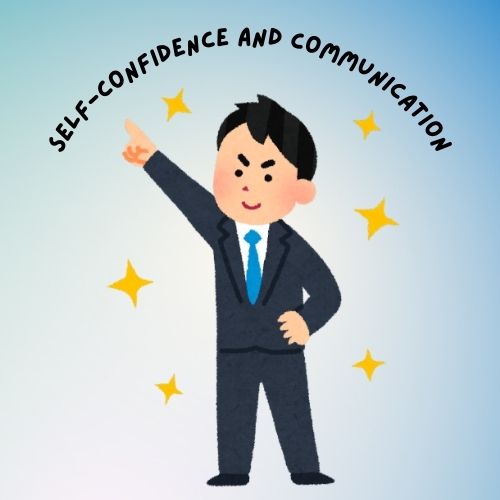
Self-confidence and communication are deeply intertwined. When you feel good about yourself, it naturally enhances the way you talk and interact with others.
Confidence Speaks Loudly
Confidence isn’t just about what you say, it’s also about how you say it. If you stand tall, believe in your words, and deliver them with certainty, people are more likely to listen and believe in you as well. A confident tone captures attention and makes your message more compelling.
Feedback Boosts Growth
Instead of shying away from feedback, welcome it. Each piece of constructive criticism is a golden opportunity for growth. As your skills sharpen, so does your self-assurance. This cycle of positive improvement leads to even greater confidence and communication ability.
Preparation is Key

Knowledge dispels doubt. If you thoroughly understand your subject matter, your nervousness diminishes. Prepare well, organize your thoughts, and familiarize yourself with your material. Confidence stems from knowing you’re ready and equipped to tackle questions and engage in discussions effectively.
Mistakes are Lessons
Fear of making a mistake can cripple your ability to communicate effectively. However, everyone makes mistakes. The key is to see each slip-up as a learning moment. Reflect on what went wrong and how to correct it. This approach not only improves your skills but also builds resilience and self-confidence.
Practice Regularly

Like any other skill, communication improves with practice. Engage in conversations, make presentations, and participate in discussions. The more frequently you put yourself out there, the more your comfort and skill level in communicating will grow. Over time, this practice converts into heightened self-confidence, reducing anxiety and making you a more effective communicator.
By dedicating time to developing your communication skills, you naturally bolster your self-confidence. Remember, every small step can lead to significant improvements. As your self-confidence increases, you’ll find that your capacity to communicate clearly and persuasively increases likewise.
Start with simple scenarios and gradually challenge yourself with more complex communication tasks. With persistence, the synergy between self-confidence and effective communication will open new doors in both your personal and professional life.
Techniques to Boost Your Communication Skills and Confidence
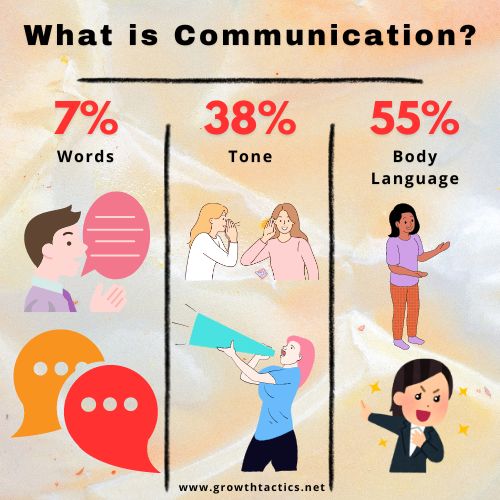
Enhancing your ability to communicate doesn’t have to be an overwhelming challenge. Here’s a guide to straightforward strategies that will strengthen your dialogue and elevate your confidence.
Certainly! Here are the sections with the headers formatted as H3:
Listen Actively
Active listening is the process of fully concentrating, understanding, responding, and remembering what the other person is saying.
How to Achieve It:
- Focus: Turn off distractions, such as your phone or computer, to fully engage with the speaker.
- Non-Verbal Cues: Maintain eye contact without staring. Nod occasionally to show understanding, and use facial expressions to respond to the conversation.
- Verbal Affirmations: Use phrases like “I see,” “That makes sense,” or “Exactly” to show engagement.
- Reflect: Summarize or paraphrase what the speaker has said to ensure you’ve got it right.
- Don’t Interrupt: Let the speaker finish their points before you chime in. Interrupting can be perceived as disrespectful and suggest that you value your input over theirs.
Benefits:
- Builds trust and rapport.
- Helps to fully understand the speaker’s perspective.
- Encourages open and honest communication.
Simplify Your Message
Simplifying your message means using clear, concise language that is easy for your audience to understand.
How to Achieve It:
- Use Simple Language: Avoid jargon, technical terms, or overly complex words unless absolutely necessary.
- Be Direct: Get to the point quickly. Avoid beating around the bush.
- Examples and Analogies: Use familiar examples or analogies to clarify complex ideas.
- Check Understanding: Ask your audience if they have understood or if they have any questions.
Benefits:
- Increases the likelihood that your message will be understood and remembered.
- Reduces the chance of miscommunication and misunderstandings.
- Makes your communication more accessible to a broader audience.
Practice Public Speaking
Public speaking is the act of delivering a speech or presentation to a live audience.
How to Achieve It:
- Join Classes: Enroll in public speaking courses to learn techniques and gain confidence.
- Local Clubs: Join organizations like Toastmasters, which provide a supportive environment for practicing public speaking.
- Seek Opportunities: Volunteer to speak in meetings, seminars, or community events.
- Record Yourself: Practice by recording your speeches to analyze body language, tone, and clarity.
Benefits:
- Builds confidence and reduces the fear of speaking in front of others.
- Enhances your ability to communicate ideas clearly and effectively.
- Improves your overall communication skills and leadership abilities.
Pay Attention to Body Language
Body language includes facial expressions, gestures, posture, and other physical movements that accompany speech.
How to Achieve It:
- Posture: Stand or sit up straight to convey confidence and openness.
- Gestures: Use hand movements to emphasize key points but avoid overdoing it.
- Facial Expressions: Smile genuinely, maintain relaxed facial muscles, and match your expression to your message.
- Eye Contact: Maintain regular eye contact to create connection and trust but avoid staring.
Benefits:
- Reinforces the verbal message and makes it more impactful.
- Conveys confidence, openness, and engagement.
- Helps establish rapport and trust with the audience.
Ask Questions
Asking questions is about engaging your conversation partner to clarify understanding, gather information, or show interest.
How to Achieve It:
- Open-Ended Questions: Ask questions that require more than yes/no answers to encourage elaboration.
- Follow-Up Questions: Show you’re listening by asking for more details or clarification.
- Timing: Don’t overwhelm the conversation with questions. Ask at appropriate pauses.
- Relevance: Ask questions that are pertinent to the discussion.
Benefits:
- Encourages deeper conversation and understanding.
- Shows that you value the other person’s input.
- Helps you gather more complete and accurate information.
Be Concise and Specific
Being concise and specific means expressing your thoughts clearly and briefly, focusing on the essential points.
How to Achieve It:
- Stay On Topic: Avoid veering off into unrelated tangents.
- Use Bullet Points: For written or verbal communication, bullet points can help outline key ideas clearly.
- Edit Rigorously: Review and cut unnecessary words or details.
- Clear Objectives: Know the main points you want to convey and stick to them.
Benefits:
- Respectful of the listener’s time.
- Reduces confusion and keeps the audience engaged.
- Facilitates more effective and efficient communication.
Think Before You Speak
Taking a moment to organize your thoughts before speaking to ensure clarity and coherence.
How to Achieve It:
- Pause: Allow for a brief pause to gather your thoughts before responding.
- Outline Mentally: Quickly outline the main points you want to communicate.
- Consider the Audience: Think about how your message will be received and adjust accordingly.
- Avoid Emotional Responses: Don’t react impulsively in heated situations. Take time to calm down and think.
Benefits:
- Reduces the risk of misunderstandings.
- Helps to communicate more effectively and thoughtfully.
- Prevents unnecessary conflict and confusion.
Give Constructive Feedback
Constructive feedback is meant to help the recipient improve by focusing on specific suggestions rather than general criticism.
How to Achieve It:
- Be Specific: Provide clear examples of what can be improved and how.
- Frame Positively: Focus on improvement rather than criticizing faults.
- Be Timely: Give feedback close to the event or performance for better relevance.
- Be Supportive: Offer help or resources for improvement.
Benefits:
- Fosters a positive and productive environment.
- Encourages personal and professional growth.
- Builds mutual respect and trust.
Improve Your Diction
Diction refers to the clarity and enunciation with which you pronounce words.
How to Achieve It:
- Practice Pronunciation: Use tongue twisters and practice speaking slowly to improve clarity.
- Speak Loudly: Ensure you project your voice so that it is clearly heard.
- Use Pauses: Take natural pauses to allow enunciation of words.
- Record and Playback: Record your speech and playback to identify areas for improvement.
Benefits:
- Enhances speech clarity and ensures your message is understood.
- Reduces the need for repetition.
- Makes you a more effective and impactful communicator.
Commit to practicing these techniques persistently. Gradual improvement in these areas will not only enhance your communication abilities but will also build your self-assurance in all your personal and professional interactions. Start with these easy-to-implement strategies and steadily work toward mastering the art of effective communication.
Overcoming Nervousness and Building Self-Confidence in Communication
Feeling nervous is normal. Yet, it can stand in the way of showing our true potential. Here’s how to overcome these feelings and build your confidence.
Start Small
Take baby steps. Face your fears bit by bit. Success in small things boosts confidence. It prepares you for bigger challenges.
Prepare Well
Know your stuff. The more you understand, the less you’ll feel nervous. Preparation makes you feel ready and reduces anxiety.
Practice Breathing Techniques
Breathe deeply. It calms your mind. Before a big moment, take slow breaths. It helps control nervousness.
Set Realistic Goals
Be realistic. Aim for achievable goals. Meeting these goals builds confidence. It shows you can do what you set out to.
Visualize Success
Picture it. Imagine succeeding. This visualization builds inner belief. It makes success feel attainable.
Focus on Progress, Not Perfection
Nobody’s perfect. Aim for improvement, not perfection. Celebrate small victories. It shows growth and builds confidence.
Speak Positively to Yourself
Be kind to yourself. Use encouraging words. Positive self-talk strengthens self-esteem. It fights off doubts.
Accept Mistakes
Mistakes are lessons. They’re not failures. Learn from them. It builds resilience and confidence.
Seek Feedback
Ask for it. Constructive criticism helps you improve. It shows areas for growth. This knowledge can boost your confidence.
Surround Yourself with Support
Keep good company. Friends who uplift you can boost your morale. Their support makes overcoming fears easier.
By applying these steps, you can gradually reduce nervousness and enhance your self-confidence. Remember, change doesn’t happen overnight. Be patient with yourself. Celebrate every success, no matter how small. Over time, you’ll find your confidence growing, making it easier to manage nervousness and face new challenges boldly.
Maintaining Respect and Professionalism in Confident Communication
Communicating with respect and professionalism is key. It helps create a positive environment. Here’s how to maintain these qualities in your communication.
Be Clear and Direct
Speak clearly. Say what you mean. Direct communication prevents misunderstandings. It shows you respect the listener’s time.
Use Polite Language
Always be polite. Say “please” and “thank you.” Polite words show respect. They make conversations pleasant.
Listen Actively
Listen more. Interrupt less. When you listen, people feel valued. It’s a sign of respect and professionalism.
Respond Promptly
Answer quickly. Don’t leave people waiting. A prompt reply shows you value their time. It’s professional behavior.
Keep Emotions in Check
Stay calm. Don’t let anger control you. Responding calmly, even when upset, keeps the conversation respectful.
Respect Boundaries
Know the limits. Every relationship has boundaries. Respecting them shows professionalism. It builds trust.
Honor Confidentiality
Keep secrets safe. Don’t share private information. Respecting confidentiality is professional. It shows you’re trustworthy.
Avoid Gossip
Don’t gossip. It harms reputations. Speaking kindly of others builds respect. It maintains a professional atmosphere.
Stay Positive
Be optimistic. Positive communication uplifts everyone. It reflects well on you. It shows professionalism.
Be Inclusive
Include everyone. Don’t leave people out. Inclusivity shows respect. It makes the workplace better for everyone.
By following these guidelines, you keep communication respectful and professional. It leads to better relationships. It also creates a supportive, productive environment. Always aim to be respectful and professional in your interactions. It will serve you well in all aspects of life.
Continuous Improvement and Lifelong Learning
Growth never stops. Embracing continuous improvement and lifelong learning is vital. Here’s how to keep growing and learning throughout life.
Stay Curious
Ask questions. Stay interested. Curiosity fuels learning. It keeps your mind active and engaged.
Set Learning Goals
Plan your growth. Set clear learning objectives. Goals guide your learning journey. They keep you focused.
Read Regularly
Read books. Explore articles. Reading expands knowledge. It exposes you to new ideas and perspectives.
Take Courses
Enroll in classes. Online platforms offer many courses. Continuous learning sharpens skills. It keeps you updated.
Learn from Others
Seek mentors. Listen to peers. Everyone has something to teach. Learning from others provides practical insights.
Reflect on Experiences
Think about what you did. Analyze successes and failures. Reflection turns experience into insight. It helps you grow.
Embrace Challenges
Step out of your comfort zone. Tackle new problems. Challenges stimulate your brain. They drive personal growth.
Share Knowledge
Teach others. Share what you learn. Teaching reinforces your knowledge. It benefits both you and others.
Stay Adaptable
Be flexible. Embrace change. Adaptability is key to learning. It allows you to thrive in various situations.
Celebrate Progress
Acknowledge achievements. Celebrate learning milestones. Recognizing progress boosts motivation. It fuels your desire to learn more.
By actively pursuing lifelong learning and continuous improvement, you cultivate a rich, adaptive, and rewarding life. Keep pushing the limits of your knowledge and skills. The journey of learning never really ends. It just opens new doors to endless possibilities!
Closing Thoughts
In conclusion, never stop learning. It’s the path to lasting growth. Keep setting goals and chasing them. Stay curious about the world. Embrace each day as a chance to learn something new. Remember, small steps can lead to big changes.
Celebrate every win along the way. Keep pushing, keep growing. And most importantly, enjoy the journey of lifelong learning. It’s one of the most rewarding adventures you’ll ever embark on.

